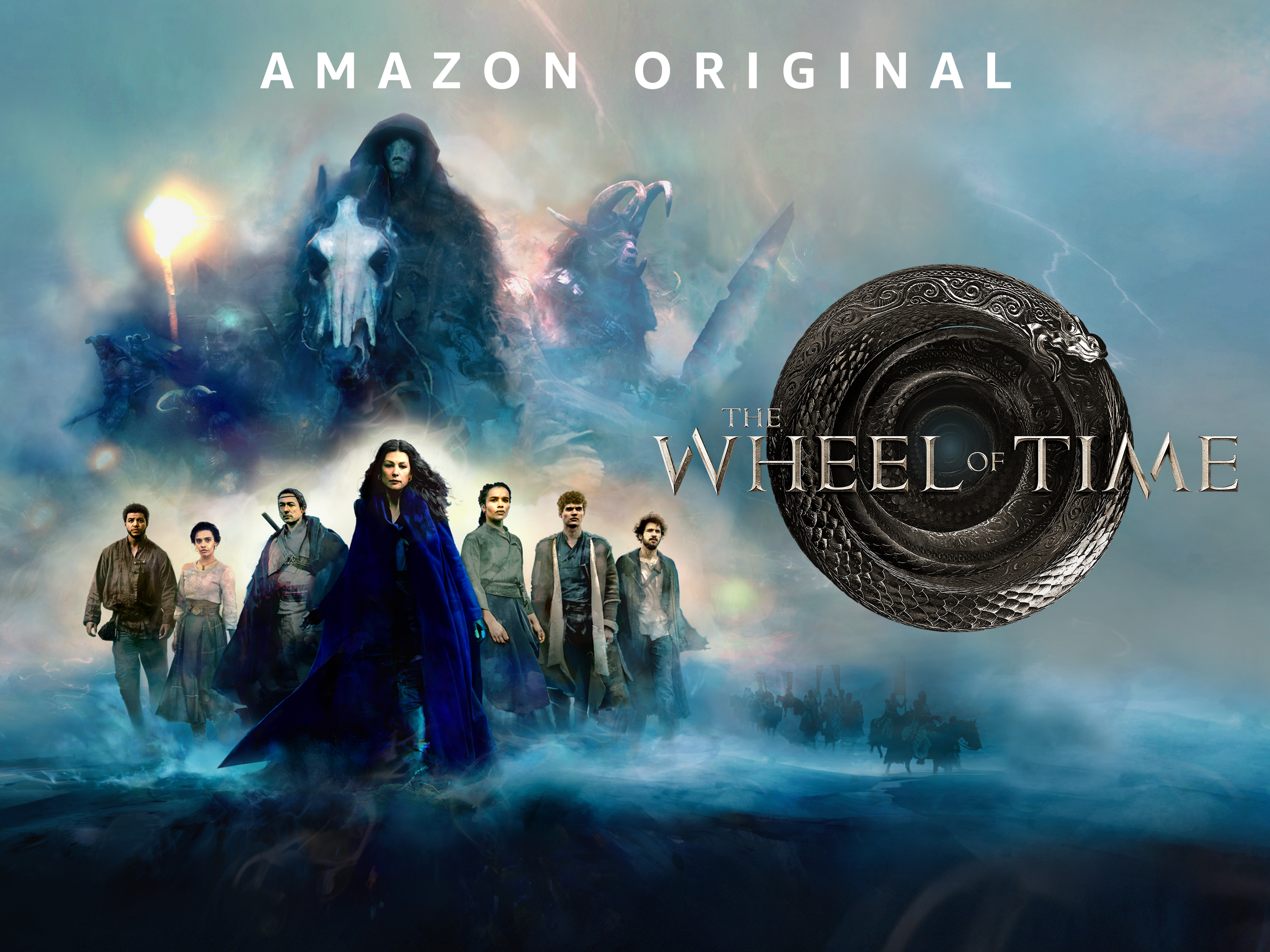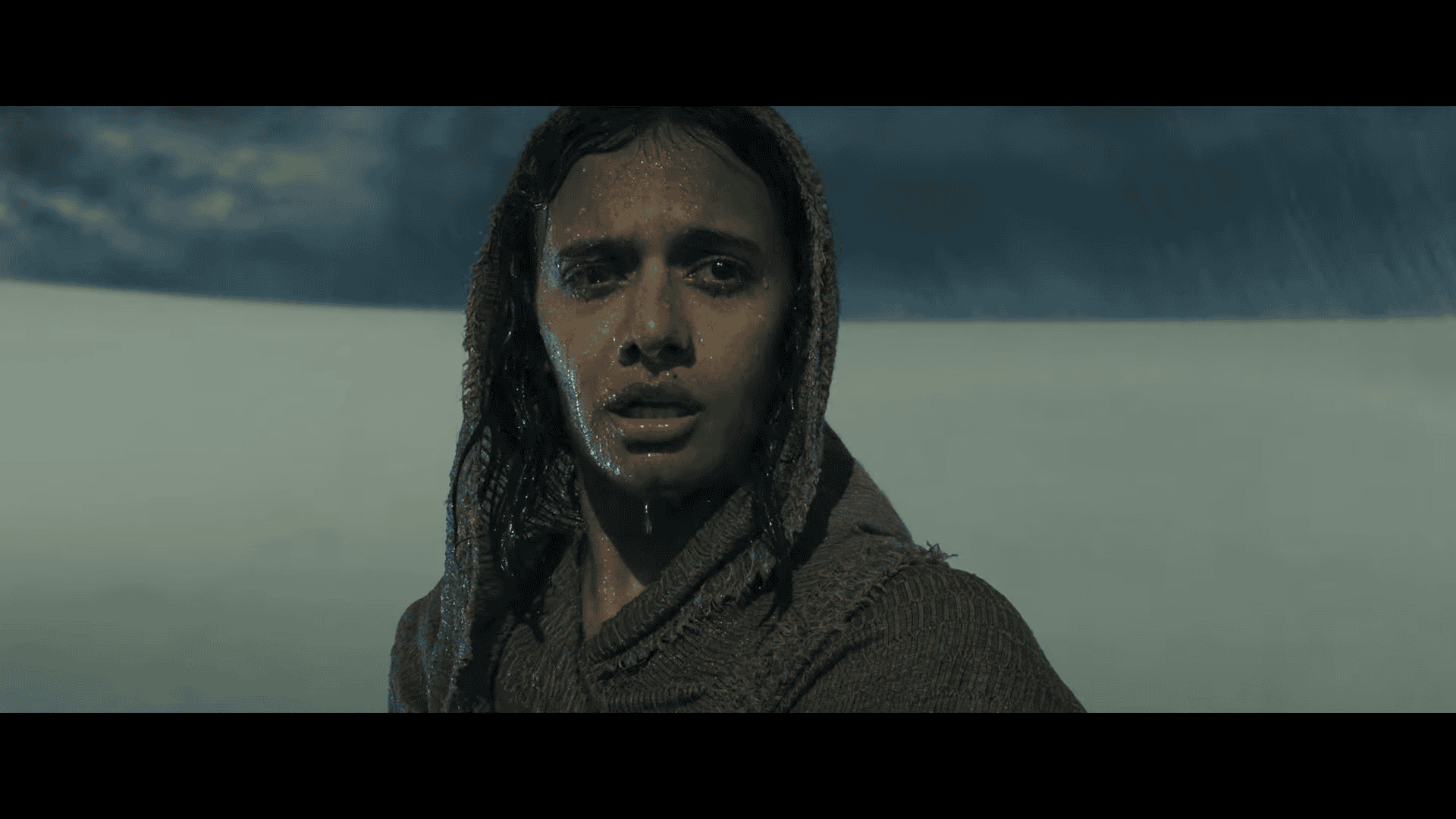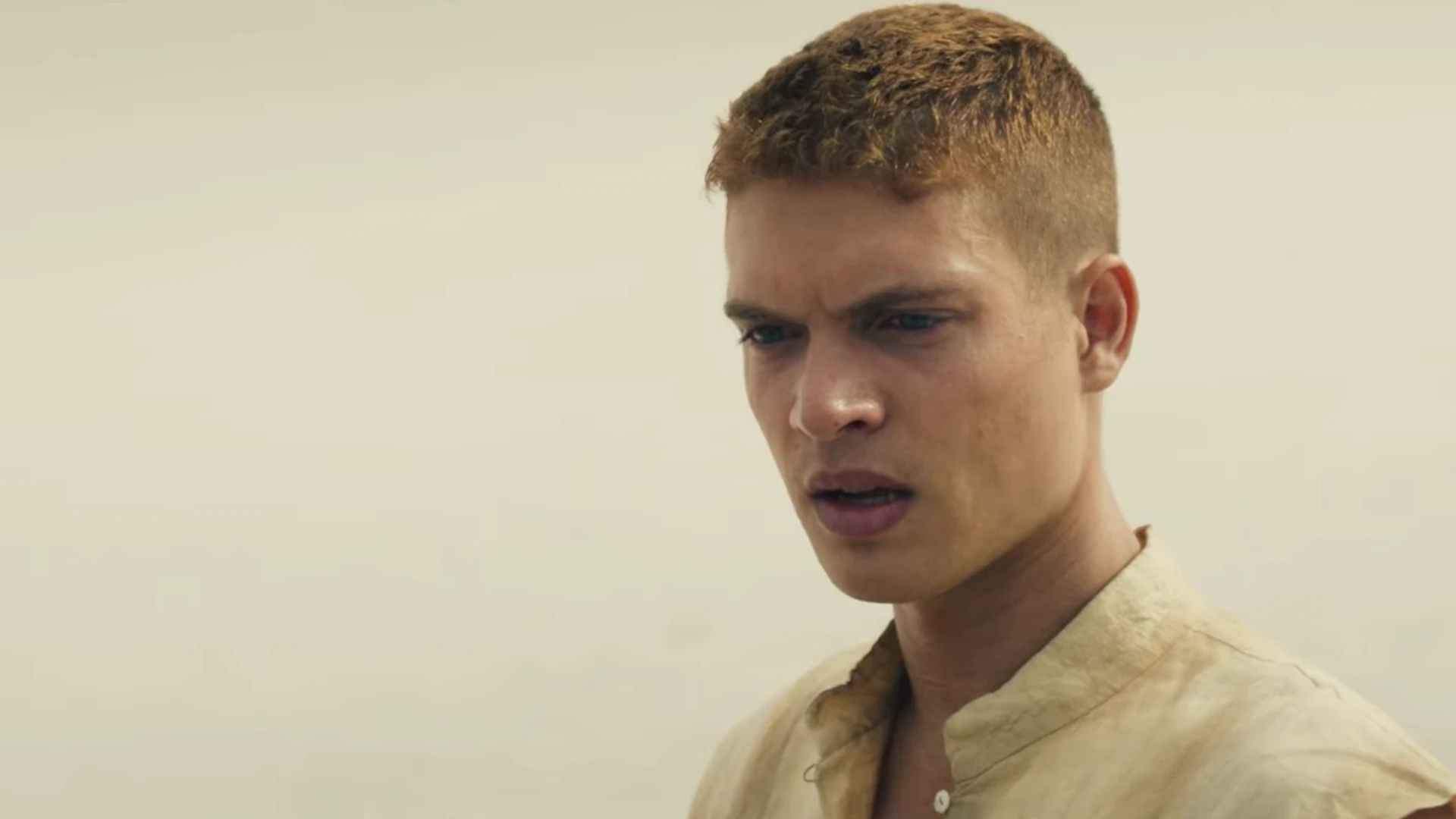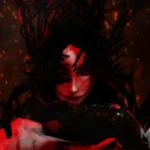The Wheel of Time, Amazon’s ambitious adaptation of Robert Jordan’s legendary fantasy saga, has reached a dramatic crossroads. Despite a critically acclaimed third season and a loyal global fanbase, Amazon Prime Video has officially pulled the plug on the series. The move has stunned many, especially given the show’s growing momentum, improved storytelling, and strong ratings — but that hasn’t stopped fans from rallying behind the Wheel.
Series Canceled – But The Fight Isn’t Over
Amazon’s decision to cancel The Wheel of Time after Season 3 reportedly stemmed from high production costs and concerns over long-term viewership growth. While the streamer never released full audience metrics, insiders suggest the fantasy drama struggled to retain viewers at the scale Amazon expected for a multi-season epic on par with The Lord of the Rings: The Rings of Power.

Still, fan enthusiasm remains undeterred. In Houston, a grassroots movement has sparked a campaign to save the show. Organizers launched a GoFundMe aimed at raising $16,000 for billboard and sky-banner ads in major cities like New York, Los Angeles, and London. The message is clear: The Wheel of Time deserves to continue, whether on Amazon or a new platform. The campaign has already raised over $15,000 and gathered 100,000+ petition signatures — an impressive feat that mirrors the passion seen during past fan revivals like Lucifer and The Expanse.
Showrunner Rafe Judkins broke his silence following the news, expressing both shock and optimism. He admitted that even he wasn’t given full clarity on Amazon’s reasoning. Still, he emphasized his desire to finish the story, expressing hope that the series could be picked up elsewhere: “The world of The Wheel of Time has so much more to offer, and fans deserve to see the story through.”
Season 3: The Best One Yet?
Season 3 of The Wheel of Time, which premiered on March 13, 2025, and wrapped up on April 17, 2025, has widely been regarded as the show’s strongest outing. Adapting The Shadow Rising and The Fires of Heaven, the season leaned into the series’ more complex mythology and character development.

Highlights include:
- Shohreh Aghdashloo joining the cast as the powerful and divisive Elaida do Avriny a’Roihan.
- Moiraine (Rosamund Pike) regaining her connection to the One Power after her Season 2 arc of loss and uncertainty.
- Rand al’Thor’s journey to the Aiel Waste, where he begins to understand his identity as the Dragon Reborn and the cultural weight that comes with it.
- Epic battles and political intrigue across the White Tower, the Waste, and the wider world of the Westlands.
Critics responded positively to the darker tone, sharper writing, and improved pacing. On Rotten Tomatoes, Season 3 holds a 97% critic score and an 83% audience rating, marking a high point for the series in terms of both execution and reception.
A Growing Trend: Fantasy Series on the Chopping Block
The cancellation of The Wheel of Time reflects a broader trend in the streaming era, where even well-reviewed shows aren’t safe if they don’t meet evolving business models. High-budget fantasy shows are especially vulnerable due to their expensive visual effects, elaborate sets, and sprawling casts. In recent years, similar fates befell Netflix’s Shadow and Bone and HBO’s The Nevers, leaving fans of serialized fantasy increasingly wary of incomplete arcs.
Still, The Wheel of Time has two major things working in its favor: global popularity and source material depth. The original 14-book series (plus a prequel) offers years of story potential, and its worldwide fandom mirrors the dedication seen for Game of Thrones and The Witcher.
What’s Next – A New Platform?
There’s growing speculation that the show could find a second life on another platform. Netflix, which has a mixed track record with fantasy, has been floated as a candidate, while others point to Paramount+ or even a co-production model involving Amazon’s international branches.
While nothing is confirmed, the combination of high critical praise, unfinished storylines, and mobilized fans makes The Wheel of Time a strong contender for rescue. If Lucifer, Manifest, and The Expanse can be revived through fan persistence and platform shifts, there’s still hope the Wheel will turn again.
For now, fans wait, watch, and push — and the dream of seeing Rand, Egwene, Mat, Perrin, and Nynaeve reach the Last Battle lives on.
A Look Back At The Wheel of Time: Season 2
The second season of “The Wheel of Time” brought significant improvements to the fantasy adaptation. Compared to its first season, the show has made considerable strides in storytelling, character development, and visual effects. Season 2 is notably stronger than its predecessor, with fans and critics acknowledging the show’s evolution as it continues to adapt Robert Jordan’s complex fantasy world.
While the season received mixed reviews, it set important groundwork for the upcoming third season. The finale revealed that Ishamael had released the rest of the Forsaken before his death, introducing new threats for our heroes. Fan-favorite characters like Rand, Egwene, Nynaeve, Perrin, and Mat faced unique challenges, with Egwene and Nynaeve beginning their training at the White Tower.
The show remains somewhat divisive, with some viewers suggesting it’s best enjoyed by those already familiar with the source material. Despite its flaws, excitement builds for Season 3 as the story expands and the world of The Wheel of Time grows more complex on screen.
Key Takeaways
- Season 2 represents a significant improvement over the first season with better storytelling and production values.
- The finale set up exciting new threats with the release of the Forsaken, creating anticipation for Season 3.
- While the adaptation has its flaws, it continues to develop the complex fantasy world created by Robert Jordan.
Season Two Overview
The Wheel of Time Season 2 expanded the fantasy series’ world while following our scattered heroes across different lands after their confrontation with the Dark One. The adaptation made significant changes from Robert Jordan’s books while introducing key characters like Aviendha, Elayne, and Lanfear.
Major Plot Points and Adaptations
Season 2 picks up after the events at the Eye of the World, with the main characters now scattered. Rand goes into hiding, fearing his powers as the Dragon Reborn might lead him to darkness. Meanwhile, Moiraine deals with being cut off from the One Power, a significant character development not found in the books.
The season incorporates elements from “The Great Hunt” but makes notable adaptations. The Seanchan invasion becomes a central threat, bringing tension to the coastal city of Falme. Their arrival creates dramatic consequences, especially for channelers like Egwene.
Perrin’s storyline evolves as he embraces his connection to wolves and faces off against Darkfriends. In a dramatic finale, he kills Geofram Bornhald during the battle at Falme, marking his growth from reluctant fighter to warrior.
Casting and Character Developments
New characters breathe fresh life into the series. Aviendha, a fierce Aiel warrior, makes her entrance, laying groundwork for her future importance. Lanfear, one of the Forsaken, emerges as a complex villain with connections to Rand’s past lives.
Liandrin’s character receives expanded development, showing the Red Ajah’s ambitions and manipulations within the White Tower politics. Elayne Trakand also joins the cast, bringing royal perspective to the unfolding events.
The show handled a major casting change when Dónal Finn replaced Barney Harris as Mat Cauthon. The writers incorporated this change into the storyline, giving Mat a compelling arc as he struggles with darkness and his connection to the cursed dagger from Shadar Logoth.
Production Quality and Locations
Amazon Prime invested heavily in production values for Season 2, creating immersive fantasy environments that rival other epic series like Game of Thrones. The special effects for channeling the One Power show noticeable improvements, with more intricate weaves and visual distinctiveness.
The coastal city of Falme represents one of the season’s most impressive new settings. Its architecture and cultural details help establish the expanding world beyond the Two Rivers and Tar Valon introduced in Season 1.
Costume design evolves to reflect different cultures, particularly with the introduction of the Seanchan forces with their insect-like helmets and exotic appearance. These visual elements enhance the world-building that makes The Wheel of Time universe distinct among fantasy adaptations.
Cultural Impact and Reception
The Wheel of Time Season 2 has generated significant discussion across entertainment circles, creating ripples throughout streaming culture and fantasy fandom alike. The second season’s darker tone and improved storytelling have reshaped how audiences perceive the adaptation.
Fan Base and Community Response
Season 2 has created a divided response among viewers, particularly between book readers and new audiences. Many long-time fans of Robert Jordan’s work have expressed conflicting opinions about the adaptation choices. While some appreciate the improved production values and character development compared to Season 1, others remain critical of deviations from the source material.
Online communities have grown more active with the release of Season 2, with Reddit threads and social media discussions analyzing the portrayal of key elements like the Aes Sedai and the Forsaken. Fan theories about Season 3 began circulating even before the finale aired.
The darker themes of the second season have particularly resonated with viewers seeking more mature fantasy storytelling, similar to early Game of Thrones seasons.
Comparisons to Other Series
The Wheel of Time frequently faces comparisons to other major fantasy adaptations. Critics often position it against HBO’s Game of Thrones, Netflix’s The Witcher, and Amazon’s own Rings of Power.
Season 2’s improved quality has helped distinguish it from these competitors. As one review noted, the show has taken “a darker, more thrilling turn” that helps set it apart in the crowded fantasy landscape.
Some viewers draw parallels between The Wheel of Time and The Witcher, as both series balance magical elements with political intrigue. However, The Wheel of Time’s unique magic system featuring the One Power and concepts like the Heroes of the Horn create distinct storytelling possibilities.
Unlike Game of Thrones, the series maintains a stronger focus on destiny and chosen-one narratives.
Impact on Streaming Platforms
Amazon has positioned The Wheel of Time as a cornerstone of its fantasy catalog alongside Rings of Power. The investment reflects the platform’s strategy to compete with Netflix and HBO Max in the fantasy genre.
Audience research indicates the second season has performed well in content measurement metrics, though exact streaming numbers remain closely guarded by Amazon. The series has helped Amazon maintain subscriber engagement between releases of its other major properties.
The show’s production values showcase Amazon’s willingness to invest heavily in high-fantasy adaptations. This commitment has influenced how other streaming platforms approach fantasy IP acquisitions and adaptations.
The renewal for Season 3 before Season 2 even premiered demonstrates Amazon’s confidence in the series as a long-term franchise investment, potentially spanning the entire 14-book storyline.
Frequently Asked Questions
Many viewers have questions about The Wheel of Time Season 2. Here are answers to some of the most common inquiries about the cast, episodes, and content of the latest season.
When is the release date for The Wheel of Time Season 2?
The Wheel of Time Season 2 has already been released. The season premiered in 2023 on Amazon Prime Video.
All episodes are currently available for streaming for Prime Video subscribers.
Who are the new cast members joining The Wheel of Time Season 2?
Season 2 introduced several new cast members to portray important characters from the book series.
New additions included Natasha O’Keeffe and Meera Syal in undisclosed roles that proved significant to the plot. The season also featured Ceara Coveney as Elayne Trakand, a crucial character from the books.
Guy Roberts, Gregg Chillingirian, and Arnas Fedaravicius joined the cast as Uno Nomesta, Ingtar Shinowa, and Masema, respectively.
How many episodes are there in The Wheel of Time Season 2?
The Wheel of Time Season 2 consists of eight episodes.
Each episode continues the adaptation of Robert Jordan’s epic fantasy series. The season covers elements from several books in the series, though not in the exact sequence as the original novels.
What can viewers expect from the first episode of The Wheel of Time Season 2?
The first episode picks up after the events at the Eye of the World from Season 1.
It focuses on the aftermath of the battle and shows how the main characters have been scattered. The episode introduces the threat of the Seanchan, a powerful empire from across the ocean.
Viewers also get to see Rand dealing with his identity as the Dragon Reborn and Moiraine facing new challenges.
How does the second season of The Wheel of Time compare to the first?
Season 2 delves deeper into the world’s mythology and character development than the first season.
Based on search results, some viewers found Season 2 more flawed than the first season. One review mentioned they wouldn’t recommend the series to those unfamiliar with the books.
However, the second season introduces more of the Forsaken—powerful antagonists from the books—and expands the world-building significantly.
Has The Wheel of Time been renewed for a third season?
Yes, The Wheel of Time has been renewed for a third season.
Amazon Prime Video announced the renewal before Season 2 had even finished airing. According to search results, there is excitement for Season 3 despite some viewers having mixed feelings about the second season.
Production on the third season is already underway, showing Amazon’s confidence in the series.







